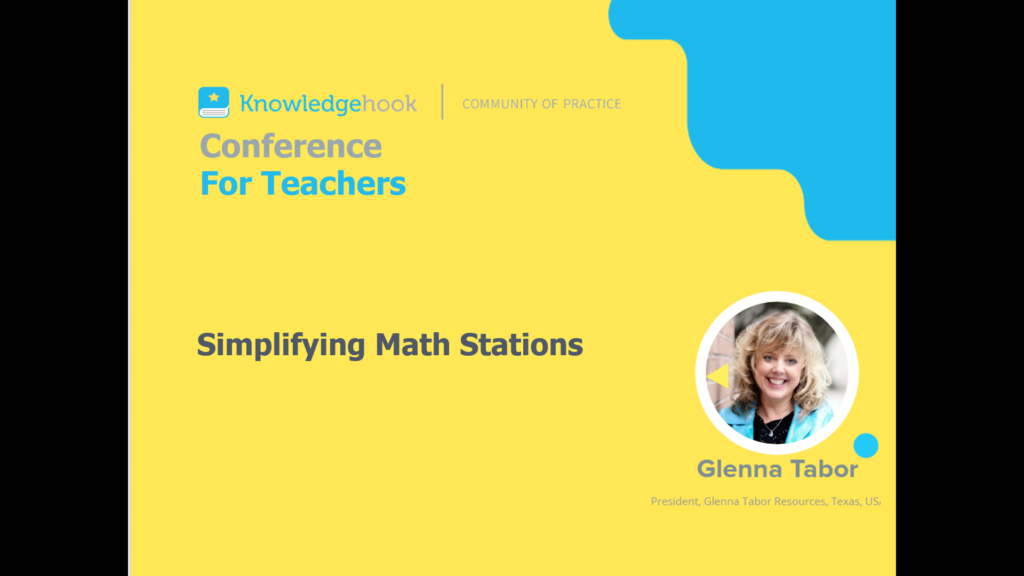
Click here & join me for “Simplifying Math Stations” at Knowledgehook’s Conference for Teachers, Thursday, July 14, 3-4pm EST.
Want to have a white copy? Click the title to download “Tabor Top Ten for Simplifying Math Stations”
Why Math Stations?
Like any good invention, the Tabor Rotation Framework came out of necessity. A couple of decades ago, I realized that my students needed a better way to learn mathematical concepts. I had almost 40 students per class, a classroom with no walls, fewer than half of my students on level, less than 60 minutes to teach math, and my students would be taking a performance-based test in April.
Since the state test was fully integrated, performance-based, and relied on students’ ability to think critically and creatively, my math instruction was going to have to become more rigorous. The way I had always taught math wasn’t going to be effective much longer.
The Beginning in the 1990’s
That’s when I began to review everything I knew about balanced literacy, small-group instruction, differentiated instruction, critical and creative thinking processes, meaningful application of knowledge, project-based learning, and good, effective teaching strategies. I studied how the brain learns and how students learn best in a classroom. The first few years of Tabor Rotation were a testing ground for essential elements. Mixed grouping at stations, leadership academy, and mathematician’s circle came first. After the first school-wide implementation of Tabor Rotation the scores increased by over 32% in one year—I knew I was on the right track!
Sophisticating the Framework
Over the next decade, the 14 Essential Elements were identified, implemented, tested, and have continually proven to be essential and effective. The 3 phases helped to organize a week or unit of instruction. Along with the implementation of essential elements, teachers, grade-level teams, and schools piloted all the components of the Tabor Rotation Framework to ensure that teachers were using what would provide the best math instruction for students. Long-range planning guides, phases of implementation, and other templates have been added to assist teachers in small-group, differentiated instruction. Everywhere Tabor Rotation has been implemented, scores go up, students and teachers are changed, and math becomes more meaningful.
Now you know a little bit about the origin of Tabor Rotation. The Tabor Rotation Framework is simply a platform which provides a way for implementing all the things a teacher should already be doing. It reinforces the best practices and gives teachers a concrete way to help every student reach & exceed their potential. Tabor Rotation is a perfect plan for Tier I of Response to Intervention, for co-teaching, and for implementing small-group instruction in classrooms from pre-K to 12th grade.
My Mantra
Tabor Rotation varies the modality through which students learn concepts. It provides for smaller student-teacher ratio for instructing every student in the room. Tabor Rotation asks teachers to create a continuum of conceptual understanding which provides learning experiences for all students to move “a little bit further than they were the day before.” That’s my mantra…what’s yours?

